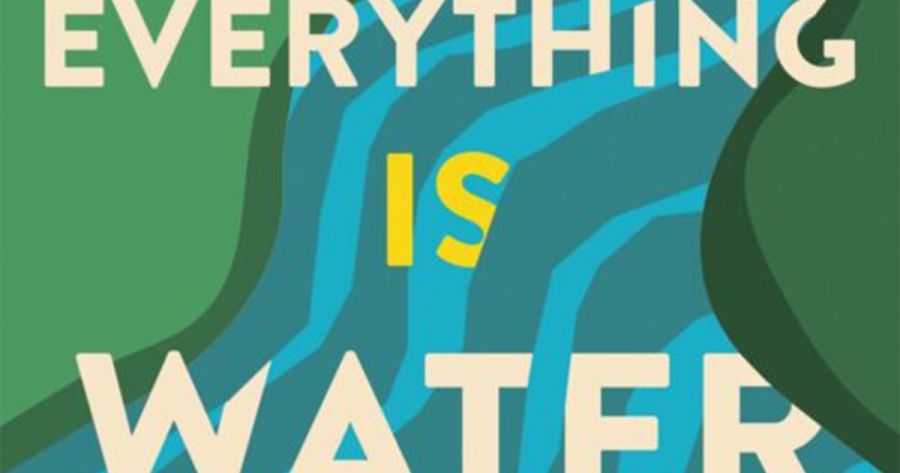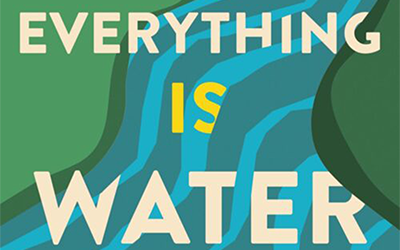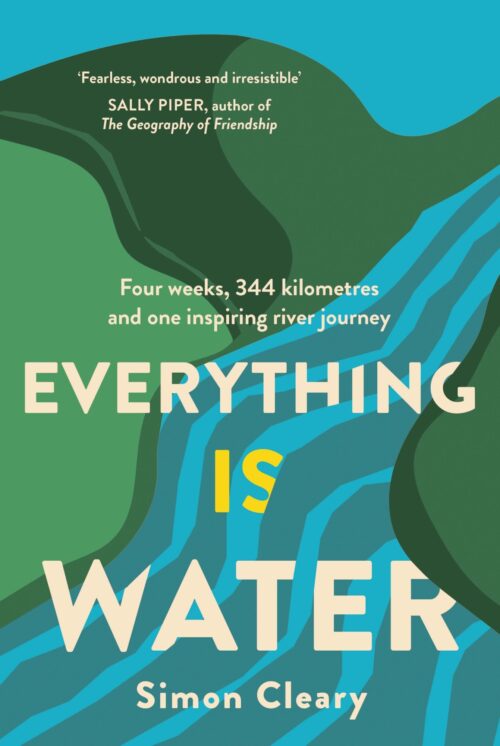
- Free Article: No
- Contents Category: Environment
- Review Article: Yes
- Article Title: Bearing witness
- Article Subtitle: Not a journey but a pilgrimage
- Online Only: No
- Custom Highlight Text:
There are few places more restful than a riverbank on a fine day, few sights more enticing than a disappearing river bend, few places more intriguing to follow than the tumbled rocks of a creek line. Following the water, to its source or destination, seems hard-wired into our psyche.
- Featured Image (400px * 250px):

- Alt Tag (Featured Image): Danielle Clode reviews ‘Everything Is Water’ by Simon Cleary
- Book 1 Title: Everything Is Water
- Book 1 Biblio: University of Queensland Press, $34.99 pb, 328 pp
- Book 1 Cover Small (400 x 600):

- Book 1 Cover (800 x 1200):

- Book 1 Readings Link: https://www.readings.com.au/product/9780702268502/everything-is-water--simon-cleary--2024--9780702268502#rac:jokjjzr6ly9m
Rivers can be both barriers and conduits, to be crossed or followed. When dry, waterlines often form the easiest access inland; in flow, they can provide a rapid ejection downstream. Cleary chooses not to go against the flow, in the tainted footsteps of white explorers, but nor does he go with the flow. Instead, he takes one of the most difficult routes, that of walking alongside the Brisbane River – all 344 kilometres of tangled vegetation, muddy banks, eroded cliffs, dams, weirs, fences, drains, overpasses, and tiresomely diverting tributaries.
Riverbanks are liminal territory in more ways than one, never a simple line on a map, but an estimation or average across time and space and an unreliable boundary marker, with access rights often determined by the difficulty of getting there. Cleary’s trek from headwaters to the sea, largely by foot, takes four weeks. This is not a journey but a pilgrimage.
Cleary’s reflections on the nature of the river, its history and future, lie at the heart of this book. There are no expositions, explanations, or simple answers, just thoughtful observation and insightful contemplation, assisted by an array of often knowledgeable walking companions and river residents along the way.
We often think about Australia as being defined by its aridity, but it could equally be said to be shaped by its long meandering rivers. Life clusters along the riverways, which carve rich channels of biodiversity across the country as they cycle nutrients from the mountains and hinterland down onto fertile plains. Humans cluster here too, both Indigenous and introduced, leaving very different footprints.
City rivers, along with their catchment tributaries, have been simultaneously exploited as freshwater supply, mode of transport, food supply, waste disposal, recreation, irrigation, mining, and a host of other not always compatible or sustainable activities. With heavy rains and a rising river dominating Cleary’s journey, the need to balance water supply against the need to protect the lives of those living downstream of major catchments is sharply demarcated.
Attitudes towards the river vary, and admiration is not assured. One resident, when asked what they know of the river, replies succinctly, ‘Bastard of a thing.’ Nature is always trying to kill you, although, as Cleary puts it ‘the river isn’t breaking the cycle of life and death but continuing it’.
Cleary does find one thing he’s searching for, if only in glimpses: an idea of what the river once was. At the start of his journey he is told, ‘this is cattle country’, a fact that is indisputably scarred into the landscape. But we are reminded by James, a Jagera man, that it used to be kangaroo and emu country. Finding the traces of that country is not always easy.
On the sixth day, Cleary comes across a sign to Greenhide Scrub:
To call it a scrub feels inadequate, almost a slight. In the days when forests like these were obstacles to farming, the naming was probably deliberate. This forest may only be a few acres, but it is amazing. Ecosystems are collapsing all around us, but not here, not yet, not now. This resistance is fierce.
As Cleary walks through the regrowth/remnant rainforest in Greenhide Scrub, he comes across a single red cedar and wonders how it survived the logging that obliterated the vast forests that once blanketed the plains of the rivers of northern New South Wales and southern Queensland. A few days later, a patch of remnant hoop pine on top of a hill – a species equally devastated by forestry – reminds him of ‘[t]hat question again: what did it once look like? Like that, I think, like that.’
Cleary’s journey reminds us of the importance of taking the slower path, the more difficult path. Even if not all of us would have wanted to share that often arduous trek with him, we can all be grateful that he has shared it with us.
‘Has anyone ever walked through a forest of Xanthorrhoea and not been humbled?’ he asks. I can think of some who have not, who have only seen cheap cattle fodder, and they are the poorer for it. As Cleary explains of these ancient plants, ‘You know they’re kindred. But older and wiser. You have to stop. Listen. Hear them sigh. Hear them murmur. They have borne witness.’ After reading this book, so have we.


Comments powered by CComment